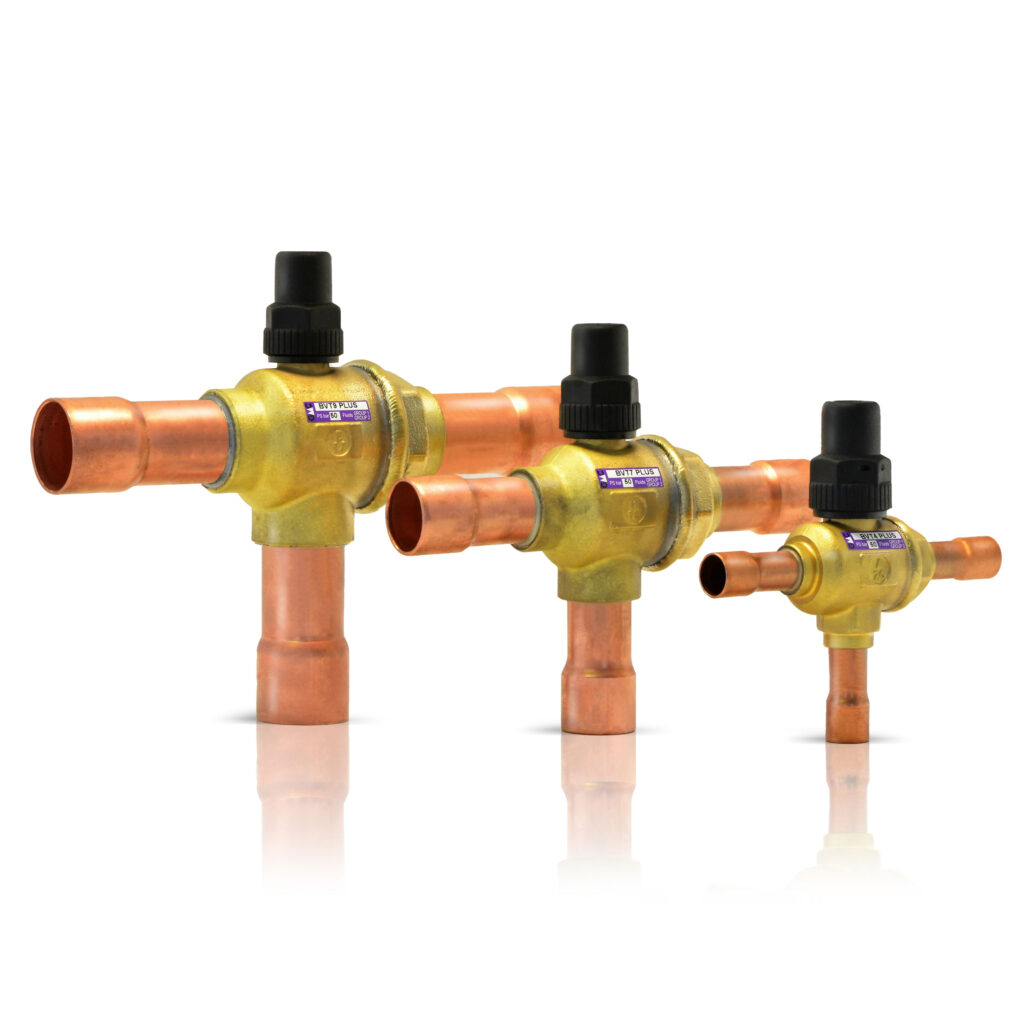
The three-way ball valves are classified as “Pressure accessories” in the sense of the PED Directive 2014/68/EU, Article 2, paragraph 5 and are subject to Article 4, paragraph 1, letter (c), of the same Directive.
All the products range is suitable for use with fluids proper to the Group 1 and 2, as defined in Article 13, paragraph 1, letter (a) and letter (b), of PED Directive 2014/68/EU with reference to Regulation (EC) n.1272/2008, in accordance with safety classification A1, A2L and A3 in Annex E of standard EN 378-1:2016. Examples of A1 and A2L refrigerant fluids are:
– HFC R32, R134a, R404A, R407C, R410A, R507;
– HFO R1234yf, R1234ze and blends HFC/HFO R448A, R449A, R450A, R452A, R452B, R445A, R454B, R454C, R513A.
Examples of A3 refrigerant fluids are (HC hydrocarbon):
– R290, R600, R600a, R1270;
For any different application is suggested to contact directly the technical department. The three-way ball valve allows directing the flow from the central connection to the two longitudinal ones. Such as bidirectional ball valves, the entire range of three-way ball valves can be operated by rotating servomotors, combining the special adapters (AMBV..) proposed in the relative paragraph of this catalogue; this solution allows remote control of the opening/closing of the valve.
The body and the chrome plated sphere are made of hot forged brass EN 12420 – CW617N and their solder connections are made of UNI EN 12735-1 – Cu-DHP R290. The TIG welding of the body and the O-ring in HNBR compound that are assembled on the spindle, assure the perfect sealing of the valves, and the special modified PTFE gaskets, around the ball, ensure low working torque. The design of these valves permits the equilibrium of internal pressures and prevents any risk of ejection of galvanized steel spindle.
We recommend installing the product with the vertical motorizable axis and in a position that allows an easy installation of the motor. The brazing of the valves on the system shall be done with a low melting point alloy. During this process do not point the flame directly towards the body keeping it cooled in order to avoid compromising the seal of the gaskets.